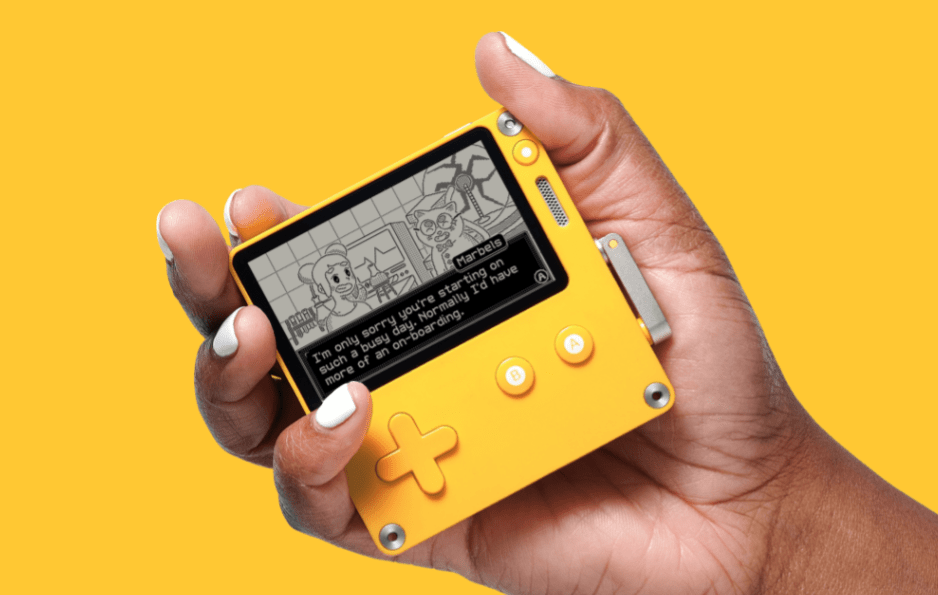
Here’s Looking At You, Kid
I wrote the article below for Wireframe, a British game dev magazine which ‘lifts the lid on video games’. And, inexplicably, lets me have a monthly column.
Nostalgia used to be a disease. A military doctor divised it in the seventeenth century to account for frequently miserable Swiss mercenaries with fever, stomach pains and fainting fits who yearned for the mountains of home. He thought nostalgia was caused by brain and ear damage from the relentless clang of Switzerland’s cowbells. Sadly, it wasn’t. Nostalgia’s a common, healthy human emotion: remembering the golden days of childhood and good things now past.
Games remind me of those Swiss soldiers. From the enduring popularity of pixel graphics to chiptune, it’s an artform obsessed with its past. Reddit is full of PC gamers opining about teenaged LAN parties. There’s serious hype about ‘Playdate’, a black and white wind-up Gameboy-looking console. Roguelikes are an entire genre of games defined by their similarity to a title that’s older than I am. You know what else is older than me? Syphilis. The past isn’t all great, people.
The Playdate console, by Panic
Nostalgia’s why we love a sequel. Games are particularly prone to them because we keep improving our graphical and technical capabilities, meaning games made even a decade ago can feel antiquated and drab. The classic titles everyone’s heard of but no-one under thirty has played – Silent Hill, Tomb Raider, Doom, Deus Ex – are still creatively brilliant but no longer meet the basic specs required in 2022. And it’s no coincidence that all of those games are the first in a long line of sequels.
But sequels set themselves a difficult task. It’s not just a return to Pallet Town we want, it’s the feeling we had when we were eight and chose our first ever starter pokémon. The beautiful Final Fantasy 7 remake is heralded as one of the best Final Fantasies in recent memory, but Square Enix updated the original turn-based combat, disappointing many who remember the old system. And games, like other art, is all about the feels. Recreating the emotions of a child in the cold, cynical heart of an adult is hard. Toy Story 3 manages it, but it’s a Pixar film with a $200 million budget about saying goodbye to childhood.
We’ve seen a classic nostalgic trip recently in Cyberpunk 2077. Cyberpunk’s a fun genre, but it isn’t woke. It’s James Bond fanfiction written by nerds, all sex and chrome and male heroes and uzis. It’s also a lot of other interesting things – American fear of Asian success, socio-political commentary, the future of AI and humanity – but you can’t separate that from the neon-drenched neo-noir of a man with a gun. A lot of people expected Cyberpunk 2077 to give them the same thrill they had when they read Neuromancer in 1984. For many, it did. For others, it challenged their modern politics in uncomfortable ways. You can revisit the 1980s, but you can’t stop living in the 2020s.
The 1986 hardcover of William Gibson’s Neuromancer
Sid Meier said a game is a series of interesting choices. The problem with gaming nostalgia is we’ve made those choices already. You can make new ones this time around, but you’ll never feel quite like before.





I have Doom and Deus Ex in my Steam library. I play them on occasion. It’s true that it’s often more difficult to play a 30 year old game, than to read a 300 (!) year old book, but a lot of people are working to make it happen! For profit, or just for the love of it.
I think one interesting effect of all this nostalgia is that people will accept games that feel like they’re “old”, which means you don’t necessarily have to spend as much development time, or computing power, to make them “new”. It can lower the barrier to entry for developing games. Then again, some games spend a lot of effort simulating something that “looks old”…Or looks like something that might have existed but perhaps never did (Broken Reality)…
Moving over to card games for a moment, I’m reminded of the Time Spiral block: Mark Rosewater said that the three sets were based on nostalgia. Time Spiral reprinted old cards, in nostalgia for the past. Planar Chaos was about “alternate nostalgia”, printing newer versions of cards with changes—different colors, etc.. And Future Sight was about “nostalgia for the future”, featuring cards referencing things that wouldn’t be printed until years later!
So none of that was disagreeing with you, I just felt like talking about some ideas. Now if you’ll excuse me, I’m going to go play Actraiser: Renaissance.
I have X-COM: Terror from the Deep in my library. I came back to it a few years ago.
No. Just no.
It turned out that over the last twenty five years, the gameplay concepts for a turn-based tactical game evolved. TFTD lacked things I’ve seen in Jagged Alliance 2, not to even mention the modern XCOM games. The stuff I was doing nearly instinctively in those turned out to have been impossible in 1995. Overwatch, exploiting AI in general, it just wasn’t there. Same goes for going back to Kingpin (that I missed out on when it released due to outdated PC) – turned out that first-person shooters evolved even faster.
Which is why I cannot understand the phenomenon of so-called “boomer” games. Been there, done that, loaded Atari games from audio cassettes, all the progress we achieved since then had a reason. I am not coming back, and I’m even less keen on being forced to revisit it in misguided cashgrabs or, even worse, delusional imitations.